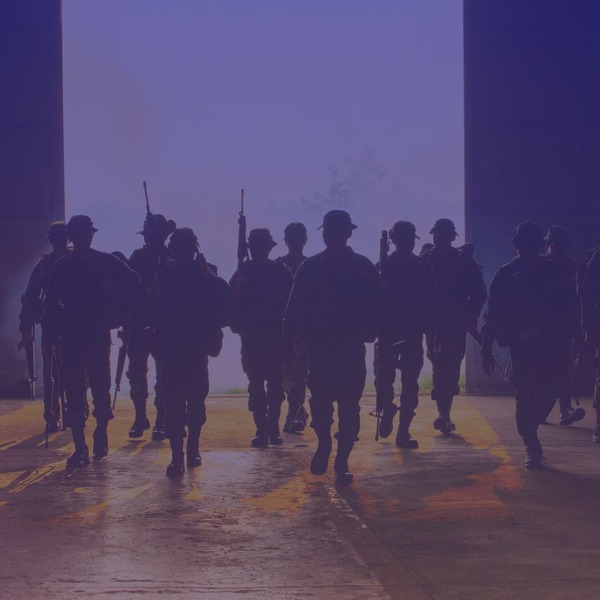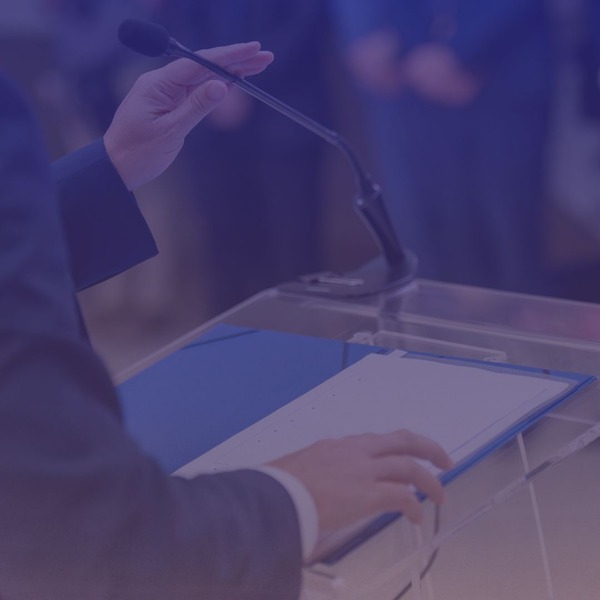
Written by Milan Wiertz
As Stoltenberg’s term as Secretary General comes to an end in September, NATO States will face the arduous task of selecting a new chief to lead the alliance in perhaps the most challenging time in the organization’s recent history. Whilst alliance members bicker over who should lead the 31-strong organization, let’s delve into some of the challenges that the alliance has faced, and will be facing as it transitions to a new Secretary General.
Looking back at Stoltenberg’s term
In some ways, the world today resembles closely to that which welcomed former Norwegian Prime Minister Stoltenberg to NATO leadership in October 2014. In February of that year, Russia had invaded Ukraine, annexing Crimea and laying the groundwork for a decade-long conflict for control in the Donbas (Sullivan, 2022). Yet if in 2014 NATO had been on the sidelines of the conflict, whose ceasefire agreement was largely achieved by and through OSCE (Allan, 2020), in 2022 the alliance took on a central role by putting its weight squarely behind Ukraine, and Stoltenberg’s leadership was of key importance in ensuring unity and action among members (Stoltenberg, 2022).
Beyond assisting the Ukrainian conflict, Stoltenberg also played a vital role in protecting the alliance from fallout. Following the election of Donald Trump as president of the United States, the NATO head was forced to defend the alliance’s continued importance in the 21st century in the face of accusations by member State leaders that the organization had become “obsolete” (Parker, 2016) and “braindead” (Macron, 2019). The Norwegian leader pressed hard to convince Western European States to increase their military spending under the motto of “burden sharing”, whilst courting President Trump to keep the U.S. in the fold. His efforts ultimately proved effective, and the Secretary General was largely credited with saving the alliance (Schuette, 2021).
Choosing a new leader
Stoltenberg’s term was first due to expire in September 2022, but the outbreak of war in Ukraine spurred allies to extend his term until 2023 to ensure the alliance could count on a steady set of hands as it considered its options (AP News, 2022). Yet although the war is yet to have an end in sight, Stoltenberg has committed to retiring at the end of September (Reuters, 2023a), meaning the race is on to find his successor.
Choosing a new leader won’t be easy. The U.S. traditionally abstains from nominating candidates for the top job, but its approval is considered vital for any candidate to succeed (Erlanger, 2022). EU countries (and the Commission itself) are also likely to push for Stoltenberg’s successor to stem from a Member State (Bayer, 2023) in a bid to strengthen the link between the institutions (and exclude the UK from the equation).
The upcoming 2024 European Parliament elections are likely to complicate the matter further, as they will initiate a process of horse trading for top posts in EU institutions, and the bid for Secretary General could well be included in the bargaining process if negotiations drag on (Erlanger, 2022).
Among the most likely contenders for the job are The Netherlands’ Mark Rutte, Slovakia’s Zuzana Čaputová, Britain’s Ben Wallace, and even the EU’s own Ursula Von Der Leyen if it came to it (Bayer, 2023), although each candidature has their own set of drawbacks, and no clear consensus seems to have emerged as of yet
A treacherous transition
Whoever becomes the Organization’s new chief, they will be faced with an important set of challenges to navigate as to keep the alliance afloat and its members committed to common strategy, not least of which is keeping up support for Ukraine and navigating old and new fault lines within the alliance.
Keeping up support for Ukraine
The most pressing issue on NATO’s mind is, of course, Ukraine. NATO allies have so far succeeded in moving in unison, but cracks have emerged as the war draws on, and major hurdles are on the horizon.
Although Western partners have so far moved in remarkable unison, acting swiftly to impose heavy sanctions on Russian industry and key leadership (Funakoshi et al., 2022) and to send increasingly advanced military equipment and ammunition to the country (Myre, 2023), war fatigue has emerged among some members, particularly in Europe’s East, to keep up such efforts in the light of economic turmoil.
Although the EU’s sanction regime introduced in partnership with NATO allies has proven remarkable in the extent to which member states have proven willing to go to punish Russia in spite of domestic economic consequences, it is not without flaws. The May 2022 Russian Oil ban, for instance, effectively excludes Hungary, the Czech Republic and Slovakia (Rankin, 2022), a major sign of emerging disunity among Western partners. More recently, in February 2023 EU States almost failed to reach an agreement on Russian rubber import quotas after Italy and Germany expressed concern regarding the economic impact of such a move (Liboreiro & Koutsokosta, 2023), likely in reference to the countries’ automotive industries.
Any further economic measures against Russia are therefore expected to prove arduous, with continuing economic trouble in Europe likely to reduce political will even further as the war drags on.
What’s worse, even those States willing to continue to contribute (at least militarily) to Ukraine’s war effort are simply running out of weapons, as Western countries struggle to replenish their supplies after years of shrinking stockpiles after the end of the Cold War (Erlanger & Jakes, 2022).
The Netherlands, for instance, operated almost 1000 Leopard 2A6 tanks in the 1970s, but now only has access to 18 “shared” tanks as part of a joint battalion with German defense forces (Ministerie van Defensie, n.d.). This has meant that even a highly committed Dutch government willing to contribute to Ukraine’s military capabilities has at best been able to propose purchasing its 18 leased Leopards off Germany to send to the front (Reuters, 2023b), a drop in the bucket compared to the 300-500 tanks the country needs (Clark, 2023), yet at the same time a figure that represents the entirety of the Netherlands’ arsenal.
NATO states have also been struggling to supply Ukraine with the ammunition it needs to continue to operate the systems it has received. The U.S., one of the largest contributors, is “uncomfortably low” on key equipment (Lubold et al., 2022) and Germany, among others, has found itself unable to export rounds for its own weapon systems due to Switzerland’s refusal to approve re-export requests (Mudge, 2022).
The combination of these issues is likely to cause a significant headache for the alliance’s new leader, and their ability to keep alliance members in line and support to Ukraine flowing, military or otherwise, will be crucial to aiding a successful outcome in Ukraine and achieving NATO’s strategic interests on the Eastern flank.
Navigating old and new divisions
Another important question NATO’s new leader will have to face is the many fault-lines which divide different countries/regions within the alliance.
The role of Europe, and the EU within the alliance, for instance, continues to be a key concern. Although the Ukraine war largely put an end to the questioning of NATO’s continued utility almost a century after its founding, many in Europe continue to view blind allegiance to the U.S. as a threat to European interests, not least of which French president Macron, to whom “strategic autonomy” is far from dead. As recently as April 2023, Macron reiterated, as part of his state visit to China, the importance of reducing European dependence on its North American partners to gain the freedom to chart an own direction (Anderlini & Caulcutt, 2023), not least when it comes to defense and energy (two sectors in which France has strategic and economic interests). The EU itself has also been keen on differentiating its direction from that of the U.S., reiterating its commitment to Strategic autonomy in April 2022 (Council of the EU, 2022a) and making use of the war in Ukraine to establish itself as a key military player by making use of the “European Peace Facility”, a security focused financing mechanism, to indirectly fund military contributions to the front (Council of the EU, 2022b).
Another historical fault line for the alliance is State commitments to military spending quotas. In 2006, member states negotiated a target spending of at least 2% of GDP on defense capabilities, a commitment reiterated in 2014 after the 2008-2009 financial crisis had caused Western countries to massively cut budgets, because of which only 3 countries in the alliance were meeting the required threshold (Funding NATO, 2023). Yet despite successive commitments, in 2022, 23 of NATO’s then 30 members continued to fall short of the target spending level (Gray & Siebold, 2023), and even hikes in funding prompted by Russia’s invasion of Ukraine are falling short of making up for the difference. Germany’s much touted “Zeitenwende”, for instance, will have the country narrowly fall short of the 2% spending target until 2027, when the country’s military budget will return to pre-war levels at just 1.2% of GDP (Kefferpütz, 2023).
Finally, the continued strength of the alliance will be played on a new cleavage relating to the Ukraine war. As the war progressed, the alliance has split up into several camps with differing levels of commitment to the war effort. At the one end of the scale, Poland and the Northern countries, particularly the Baltics, have proven some of the most enthusiastic Ukraine supporters, being among the largest military contributors (Manenkov et al., 2023) and the first to push for the shipment of western tanks (DePasquale, 2023). They are closely followed by the anglophone alliance members, particularly the U.S. and U.K., which have been the two largest contributors in absolute terms (Bushnell et al., 2023), and have generally been among the first to give in to pushes for heavier equipment donations. Then follow Western Europe and Central/Balkan Europe, which, to differing degrees, have been more hesitant to contribute, and have been on the defensive regarding further sanctions, citing the economic impact of such measures. Finally, Turkey remains an outlier in the alliance as the sole country not to impose economic sanctions on Russia (Kusa, 2022), likely remaining a headache to its Western allies for the foreseeable future.
On each of these issues, the Secretary General’s role will be crucial to keep NATO members aligned and committed to the alliance, and ensuring the frustrations of individual members are heard and addressed before they spiral.
Concluding remarks
Whomever NATO’s next Secretary General might wind up being, it is clear that the alliance will have to face important challenges as it farewells Stoltenberg, and that the next leader of one of the world’s oldest surviving military alliances will have their hands full as they attempt to steer member states into a common direction.
Bibliography
Allan, D. (2020, May 22). The Minsk Conundrum: Western Policy and Russia’s War in Eastern Ukraine [Policy Institute]. Chatham House. https://www.chathamhouse.org/2020/05/minsk-conundrum-western policy-and-russias-war-eastern-ukraine-0/minsk-2-agreement
Anderlini, J., & Caulcutt, C. (2023, April 9). Europe must resist pressure to become ‘America’s followers,’ says Macron. Politico EU. https://www.politico.eu/article/emmanuel-macron-china-america-pressure interview/
AP News. (2022, March 24). NATO extends Stoltenberg term for a year due to Russia’s war. Independent. https://www.independent.co.uk/news/world/americas/us-politics/jens-stoltenberg-ap-nato brussels-russia-b2043154.html
Bayer, L. (2023, January 30). NATO’s new secretary-general, same as the old one? Politico EU. https://www.politico.eu/article/jens-stoltenberg-new-nato-secretary-general-same-old-europe ukraine/
Bushnell, K., Frank, A., Franz, L., Kharitonov, I., Schramm, S., & Trebesch, C. (2023). Ukraine Support Tracker. Kiel Institute for the World Economy. https://www.ifw-kiel.de/topics/war-against-ukraine/ukraine support-tracker/
Clark, Gen. W., Ret. (2023, January 17). It’s great we are giving them 10 tanks from Britain. Ten tanks? Ukraine needs 300, 500 tanks (K. Bolduan, Interviewer) [Interview]. CNN. https://edition.cnn.com/2023/01/18/politics/biden-ukraine-new-tipping-point/index.html
Council of the EU. (2022a, April 5). Press release. Council Adopts Conclusions on Strategic Autonomy of the European Economic and Financial Sector. https://www.consilium.europa.eu/en/press/press releases/2022/04/05/council-adopts-conclusions-on-strategic-autonomy-of-the-european economic-and-financial-sector/
Council of the EU. (2022b, July 22). Press release. European Peace Facility: EU Support to Ukraine Increased to €2.5 Billion. https://www.consilium.europa.eu/en/press/press-releases/2022/07/22/european peace-facility-eu-support-to-ukraine-increased-to-2-5-billion/
DePasquale, R. (2023, January 23). Poland says permission from Germany is ‘a secondary issue’ with Leopard tanks. The New York Times. https://www.nytimes.com/live/2023/01/23/world/russia ukraine-news/poland-steps-in-as-pressure-grows-on-germany-to-supply-leopard-tanks?smid=url share
Erlanger, S. (2022, November 4). Who Will Be NATO’s Next Chief? The Race Is On. The New York Times. https://www.nytimes.com/2022/11/04/world/europe/nato-next-secretary-general.html
Erlanger, S., & Jakes, L. (2022, November 26). U.S. and NATO Scramble to Arm Ukraine and Refill Their Own Arsenals. https://www.nytimes.com/2022/11/26/world/europe/nato-weapons-shortage ukraine.html
Funakoshi, M., Lawson, H., & Deka, K. (2022, July 7). Tracking sanctions against Russia. Reuters. https://www.reuters.com/graphics/UKRAINE-CRISIS/SANCTIONS/byvrjenzmve/
Funding NATO. (2023). NATO. https://www.nato.int/cps/en/natohq/topics_67655.htm
Gray, A., & Siebold, S. (2023, March 21). NATO chief urges members to boost defence spending as only 7 hit target. Reuters. https://www.reuters.com/world/seven-out-30-allies-met-nato-military-spending target-2022-stoltenberg-2023-03-21/
Kefferpütz, R. (2023, February 27). One year later, Germany’s ‘Zeitenwende’ is still under construction [Policy Institute]. Atlantic Council. https://www.atlanticcouncil.org/blogs/new-atlanticist/one-year later-germanys-zeitenwende-is-still-under-construction/
Kusa, I. (2022, July 10). From Ally to Mediator: How Russia’s Invasion Has Changed Ukraine-Turkey Relations [Policy Institute]. Carnegie Endowment for International Peace. https://carnegieendowment.org/politika/88097
Liboreiro, J., & Koutsokosta, E. (2023, February 24). EU approves fresh round of sanctions on Russia, almost missing self-imposed deadline of 24 February. Euronews. https://www.euronews.com/my europe/2023/02/24/eu-approves-fresh-round-of-sanctions-on-russia-almost-missing-self-imposed deadline-of-24-
Lubold, G., Youssef, N. A., & Kesling, B. (2022, August 29). Ukraine War Is Depleting U.S. Ammunition Stockpiles, Sparking Pentagon Concern. Wall Street Journal. https://www.wsj.com/articles/ukraine war-depleting-u-s-ammunition-stockpiles-sparking-pentagon-concern-11661792188
Macron, E. (2019, November 7). Emmanuel Macron in his own words (French) (The Economist, Interviewer) [Interview]. The Economist. https://www.economist.com/europe/2019/11/07/emmanuel-macron in-his-own-words-french
Manenkov, K., Dapkus, L., & Associated Press. (2023, February 18). In Baltics, Poland, grassroots groups strive to help Ukraine. ABC News. https://abcnews.go.com/International/wireStory/baltics-poland grassroots-groups-strive-ukraine-97304981
Ministerie van Defensie. (n.d.). Leopard 2A6-gevechtstank. Ministerie van Defensie. Retrieved April 9, 2023, from https://www.defensie.nl/onderwerpen/materieel/voertuigen/leopard-2a6-gevechtstank
Mudge, R. (2022, April 26). Is it time for Switzerland to rethink its neutrality? Deutsche Welle. https://www.dw.com/en/is-switzerland-right-to-prevent-the-delivery-of-ammunition-to-ukraine/a 61597284
Myre, G. (2023, January 20). U.S., NATO countries announce massive weapons package for Ukraine. NPR. https://www.npr.org/2023/01/20/1150264976/u-s-nato-countries-announce-massive-weapons package-for-ukraine
Parker, A. (2016, April 2). Donald Trump Says NATO is ‘Obsolete,’ UN is ‘Political Game.’ The New York Times. NYT Archive. https://archive.nytimes.com/www.nytimes.com/politics/firstdraft/2016/04/02/donald-trump-tells-crowd-hed-be-fine-if-nato-broke-up/
Rankin, J. (2022, May 31). This article is more than 10 months old EU leaders agree to partial embargo of Russian oil imports. The Guardian. https://www.theguardian.com/world/2022/may/30/eu-nears compromise-agreement-for-partial-ban-on-russian-oil
Reuters. (2023a, February 12). NATO’s Stoltenberg will not seek another extension of his term, spokesperson says. Reuters. https://www.reuters.com/world/nato-extend-stoltenbergs-term-april 2024-welt-am-sonntag-2023-02-12/
Reuters. (2023b, February 15). Netherlands says still supports tank deliveries for Ukraine. Reuters. https://www.reuters.com/world/europe/netherlands-says-still-supports-tank-deliveries-ukraine 2023-02-15/
Schuette, L. A. (2021). Why NATO survived Trump: The neglected role of Secretary-General Stoltenberg. International Affairs, 97(6), 1863–1881. Oxford Academic. https://doi.org/10.1093/ia/iiab167
Stoltenberg, J. (2022, April 7). Press conference by NATO Secretary General Jens Stoltenberg following the meetings of NATO Ministers of Foreign Affairs [NATO]. https://www.nato.int/cps/en/natohq/opinions_194330.htm
Sullivan, B. (2022, February 24). Russia’s at war with Ukraine. Here’s how we got here. NPR. https://www.npr.org/2022/02/12/1080205477/history-ukraine-russia

 The European Union in Space: From exploration and innovation to security and autonomy
The European Union in Space: From exploration and innovation to security and autonomy  The Rise of the Right: The Threat Right-Wing Extremism Poses to Women and Feminist Efforts in Germany
The Rise of the Right: The Threat Right-Wing Extremism Poses to Women and Feminist Efforts in Germany  The silent shield – how special operations safeguard the global supply chain
The silent shield – how special operations safeguard the global supply chain  The Human Factor: How Personality and Psychology Drive Crises
The Human Factor: How Personality and Psychology Drive Crises 


